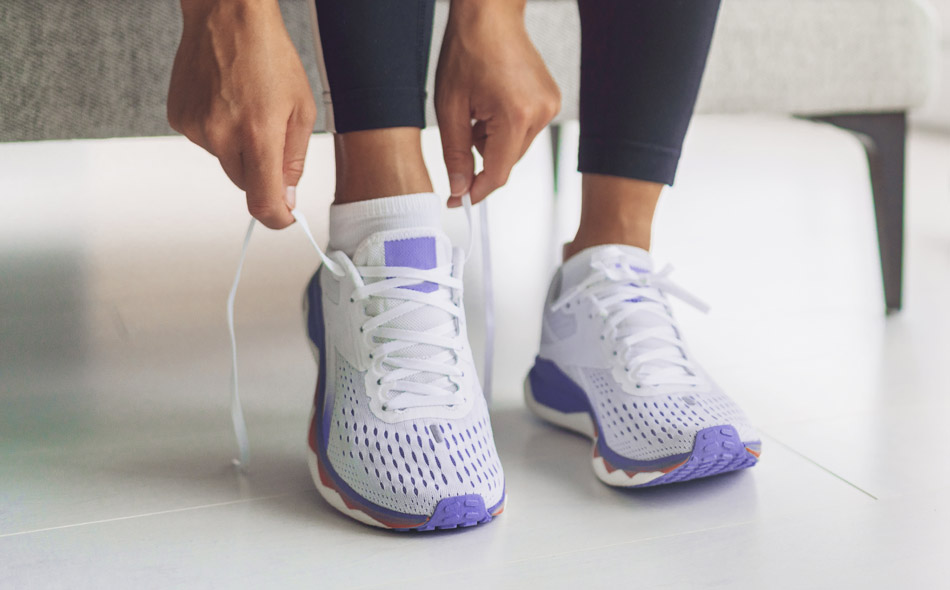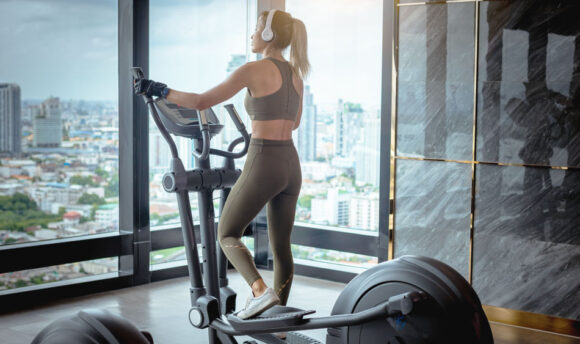Are Running Shoes Good for Walking?
People who wear the wrong walking shoes may get pain and foot problems. Shoes are very important for preventing injury, but how can you determine the right footwear? We explain whether running shoes benefit walking and factors to look into when choosing the best gear.

A good walking shoe maintains correct posture while preventing injury. You need balance when traveling across rocky paths or uneven terrains on your daily route. Not many people care about walking shoes, but choosing the right ones is important.
One day, you might come across comfortable-looking running shoes. They are padded, trendy, and perfect for keeping your feet protected. Even though they suit advanced runners, can you still use them for walking? Well, you’re about to find out.
In this article, you’ll discover whether running shoes are good for walking.
Are Running Shoes Good for Walking?
Yes, running shoes can be great for walking. This is because they’re durable and convenient for vigorous running sessions. A comfortable walking shoe should have padding, cushioned midsoles, and lightweight mesh to protect your feet.
Running shoes naturally have all the specifications you need to walk effectively. The added cushioning will prevent rocky paths from damaging your feet. Even durable rubber outsoles allow you to walk for miles without tiring out the running shoes.
You should look at some motion-control shoes before purchasing walking shoes. This means the footwear can support heavy weights, serious overpronation, and arched feet. Most running shoes have these features to protect runners during exercise.
Just be aware that some fitness brands care more about aesthetics. They could focus less on padding and natural contouring when it comes to walking. It’s better to go into shoe stores and test the shoes on your feet, as buying them online can be deceiving.
Differences Between Walking and Running Shoes
Running and walking shoes are bound to have distinct qualities, as running long distances requires cushioned soles, while morning walks just need breathable fabric. You should choose a walking shoe that suits your personal preferences.
Here are the differences between running and walking shoes:
Cushioning
Running shoes will have thicker cushioning because runners move on the ground with more force. They won’t be as flexible when you bend them. Many branded running shoes have air-cushioning systems that take added pressure off your feet and legs.
On the other hand, normal walking shoes are malleable and don’t need extra heel cushioning.
This is because your feet don’t have many collisions with the ground. Plus, added forefoot padding only increases the weight of your shoes during walks.
Heel depth
Comfortable running shoes require a built-up heel to add stability. This ensures runners don’t damage their feet when running. One study found that running without heel support can distort your posture and cause health problems.
However, those who walk don’t always need higher heels. You first touch the ground with your heel and naturally roll through the steps. This is why walking shoes are beveled to prevent shin splints, tendonitis, and possible trip-ups on bumpy pathways.
Shoe weight
Running shoes typically have more material and cushioning. This can make them heavier than neutral lightweight trainers. Some brands might purposely make running shoes lighter to avoid dragging the feet down and causing unnecessary injuries.
The walking shoe can be lightweight and breathable. Most shoes have mesh fabric to make the feet feel more graceful during walks. For more intense exercise, like a half-marathon walk, you might need sturdier shoes to prevent getting sore feet.
You can gain more professional tips and preparation ideas for walking in the Walking.Diet program. The designated app contains walking workouts, breathing exercises, daily motivation quotes, and body positioning to prevent long-term injury.
There is also a personalized walking plan for anyone who wants to lose weight or improve their health. This features meal ideas, calorie trackers, nutritional tips, and a weekly walking planner to strengthen your overall body.

- Offers walking training plan
- Provides warm-up and cool-down workouts before and after walking workout
- Includes keto desserts cookbook
- Offers the articles about food and nutrition, walking gear
Factors to Look Into When Choosing Walking Shoes
There are certain factors to consider when choosing your perfect shoes for walking. You need to find the best running shoes that prevent leg fatigue and foot complications. Take the time to experiment with different shoes until you find the right pair for your feet.
Discover the factors to consider for walking shoes below.
Shoes should fit your feet instantly and perfectly
You need shoes that are going to fit like a glove. There should be no forcing them on or feeling uncomfortable once they’re on your feet. If shoes require minimal effort, they may be the ones to support your walking adventures and prevent serious injuries.
Shoes should have a little bit of space
Of course, shoes that feel snug are great, but your toes still require space. Studies found that incorrectly fitted footwear can cause foot disorders like plantar fasciitis. You should have some extra wiggle room at the top of your shoe to move properly.
Choose shoes that can’t be bent easily
Shoes that bend easily from heel to toe aren’t suitable enough for walking. They won’t support your feet or legs during long-distance walks. Instead, choose durable shoes that have sturdy arch support, as they provide extra cushioning for your feet and shins.
Shoes should feel stable when walking
Before buying a pair of shoes, test them out to determine their comfort level. Your desired shoes should feel stable when walking around. Signs that they aren’t stable comprise uncomfortable padding, wear patterns, and weak heel support.
Choose shoes with contours and padding
Always choose shoes that have padding from heel to toe. They should have contours that fit the natural curves of your feet. Running shoes tend to use the best materials for fitness walkers, which leads to fewer foot injuries, trip-ups, and general leg pain.
A Word From Our Coach
Finding a good running shoe can make walking more comfortable. You’ll have added cushioning when traveling across uneven surfaces. Some brands focus more on aesthetics than comfort, so always make sure you buy a shoe that offers protection.
There are also barefoot shoes you can buy online. Most barefoot or neutral shoes have a completely flat heel designed to improve ankle stability. However, wearing this footwear on a walk can increase the risk of surface wounds and shin splints.
People get shin splints from overloading their leg muscles. This might be from an unstable running shoe that doesn’t have ample cushioning. Always wear shoes that suit walking on hard surfaces and don’t have a reduced range of motion during walks.
You can try walking in place to get used to the running shoe. Just pretend you’re walking while staying in the same spot. This isn’t the same as going outside, but it’s good for testing the running shoe and seeing whether they’re comfortable enough.
If you currently have foot problems, consult your doctor before walking. A medical professional may offer the best type of shoe. Going straight into exercise with foot complications might cause other damage to your ankles, shins, and legs.
Conclusion
So, how can you find the best walking shoes?
You need to find shoes that still have padding, comfort, and durability. Some walking shoes lack the materials that a running shoe has. Remember that people who wear the wrong shoe won’t experience shock absorption and may get shin complications.
For more guidance on perfecting a walk with good walking shoes, try out the Walking.Diet program. You’ll get professional advice on protecting your feet, breathing properly, eating the right food before walking, and setting realistic goals.

- Offers walking training plan
- Provides warm-up and cool-down workouts before and after walking workout
- Includes keto desserts cookbook
- Offers the articles about food and nutrition, walking gear

















































 Select your language:
Select your language: 








